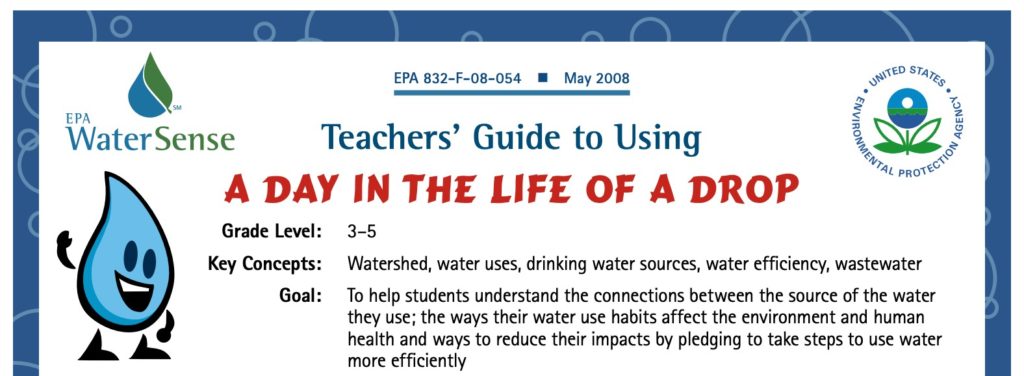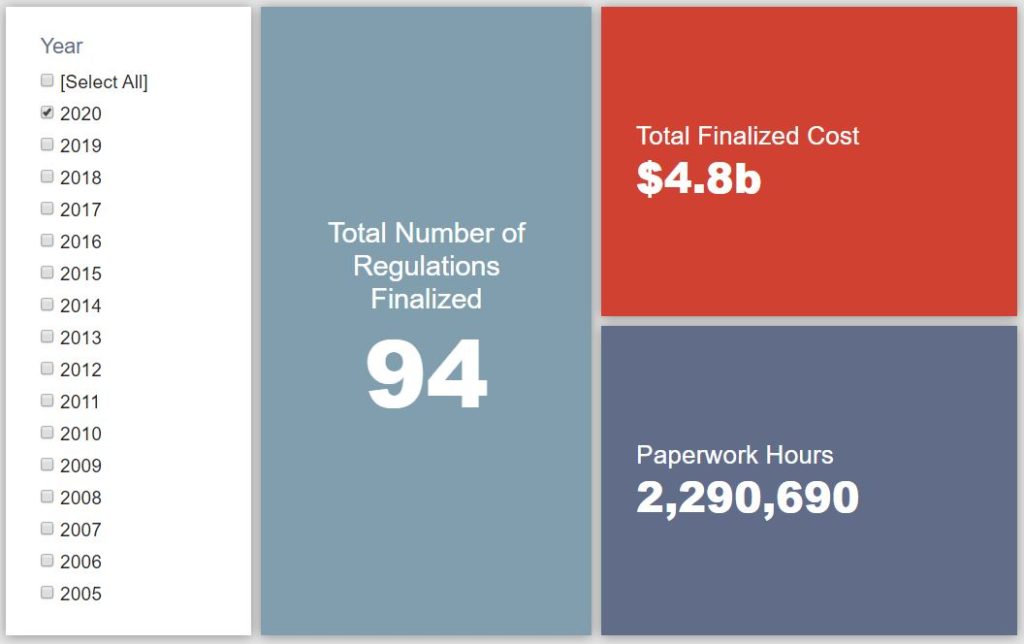Week in Regulation
April 13, 2020
Significant Coronavirus Rules Start to Appear
The two most significant rules in the Federal Register from last week were, unsurprisingly, expedited measures aiming to address certain economic and health issues presented by the ongoing COVID-19 crisis. Beyond that pair of rulemakings, however, it was a relatively mundane week. Across all rulemakings, agencies published $258.6 million in total net costs and added 820,627 hours of annual paperwork.
REGULATORY TOPLINES
- 2020 Proposed Rules: 41
- 2020 Final Rules: 66
- 2020 Total Pages: 20,355
- 2020 Final Rule Costs: $4.8 billion
- 2020 Proposed Rule Costs: $3 billion
The two big COVID-19 rules of the week came from the Departments of Labor (DOL) and Health and Human Services (HHS). DOL’s rule implements the temporary paid leave program established under the “Families First Coronavirus Response Act.” While the program is “time-limited” by the underlying statute, DOL estimates that it will bring more than half a billion dollars in administrative costs. Given its temporary nature and attachment to an emergency situation, these costs do not apply to the fiscal year (FY) 2020 regulatory budget; in fact, there is no mention of Executive Order 13,771 (the order establishing the regulatory budget).
The other significant rule of the week, out of HHS, is actually a cost-cutter. The rule, addressing “Policy and Regulatory Revisions in Response to the COVID-19 Public Health Emergency,” makes myriad changes in light of the ongoing pandemic. The rulemaking’s main source of cost reductions comes from updating the requirements surrounding the recording of “progress notes” for psychiatric hospital patients. The existing language dictated that only “physician(s), psychologists, or other licensed independent practitioner(s)” could record such notes. This rule opens this up to “nonphysician practitioners” – whose average wages are roughly one-half those of physicians – thereby saving affected facilities roughly $153 million. HHS states that such savings’ impact on the regulatory budget “will be informed by public comments received.”
TRACKING THE REGULATORY BUDGET
The most notable rule that does apply to the FY 2020 budget was a deregulatory action out of the Department of Defense (DOD). The rule updates language regarding “Performance-Based Payments” in the defense acquisition process. DOD estimates that these adjustments will save affected contractors money due to more favorable financing costs over the life of a given project. The department expects the rule to yield roughly $54 million in total public cost savings.
The Trump Administration expects to reach $51.6 billion in cumulative net savings in FY 2020. To date in the fiscal year, agencies have officially published 70 deregulatory actions and 24 regulatory actions, totaling $3.6 billion in quantified total net costs. Once the Safer, Affordable Fuel-Efficient Vehicles rule is officially published, the administration-wide total will be $195.9 billion in net total savings.
THIS WEEK’S REGULATORY PICTURE
This week, the Environmental Protection Agency (EPA) sides with President Trump on toilet flushing.

In what now seems like a lifetime ago, President Trump made news in December when, in a White House meeting on regulatory reduction, he began riffing on low-flow shower heads and toilets.
“You turn on the faucet; you don’t get any water,” said the president, according to the official meeting transcript. “They take a shower and water comes dripping out. It’s dripping out — very quietly dripping out. People are flushing toilets 10 times, 15 times, as opposed to once. They end up using more water.”
It turns out EPA had already initiated a legislatively mandated review of its WaterSense program about one year earlier. The 14-year-old program is a partnership among EPA, local water agencies, product manufacturers, retailers, and professional certifying organizations to encourage the development and use of water-efficient products and practices. The program was officially authorized in America’s Water Infrastructure Act of 2018, which required EPA to “review and revise, if necessary” any WaterSense specifications established before 2012.
In a Federal Register notice published on April 10, EPA it would maintain current specifications rather than make them more or less stringent. In addition, EPA asked for public comment on consumer satisfaction with current WaterSense labeled products, perhaps laying the groundwork to lower the specifications in the future.
TOTAL BURDENS
Since January 1, the federal government has published $7.8 billion in total net costs (with $4.8 billion in finalized costs) and 16.8 million hours of net annual paperwork burden increases (with 2.3 million hours due to final rules). Click here for the latest Reg Rodeo findings.












